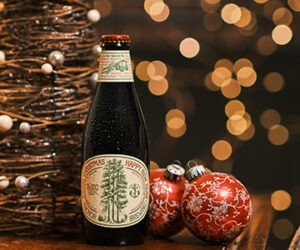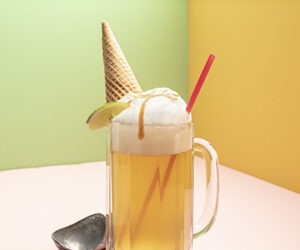Making Pre-Prohibition Beers: Tips from the Pros
When American Prohibition started in 1920 (and earlier in some U.S. states) the doors forever closed at many American breweries. Beer styles changed after the repeal of Prohibition and many recipes were lost forever. But, a number of breweries are now trying to replicate beers from the past, and you can at home too.
Brewer: Jay Wince, Weasel Boy Brewing Company in Zanesville, OH
Our pre-Prohibition lagers are tributes to Simon Linser Brewing Company, which brewed in Zanesville from the 1870s until 1918 when alcohol became illegal in Ohio. Unfortunately through decades of neglect, vandalism, theft, and finally a fire at the property in the 1980s, all the records of brewing operations had disappeared. We did extensive research and spoke with very knowledgeable people that have made the lagers of the Great Lakes region, specifically those from brewers of German decent, a focus of their attentions.
The classic American Pilsner (CAP) is basically a Pilsner style that developed out of the use of indigenous American ingredients, mainly 6-row barley and corn. It was the forerunner of the current American light lager, but is bigger all around. All the components are there but they stand out a lot more: More malt, more body, more bitterness, a bit deeper coloring, more of that wonderful noble hop flavor and aroma. It surprises our customers that there is so much flavor in a crisp, lighter-bodied refreshing beer. We chose to use an American hop variety that was very similar to the German noble varieties instead of American Cluster hops. That was a hard decision as we think both would have been appropriate and made an excellent beer.
We definitely had the goal of being true to style and I think we achieved that with these beers. Without having actual recipes (although we did actually see a pre-Pro recipe for a Pilsner) our goal was to be as accurate as possible, but in the modern age. Modern brewing techniques and ingredient advancements replace some of the tedious processes of 100 years ago. For instance, we did not decoct as that is unnecessary with most modern malts.
We obviously could not use the specific barley strains that would have been used as we don’t know which were used and it most likely isn’t available any longer. We could ball park the water profile and hit the known specs as well. It was our thought that it was more important to reproduce the essence of the style, not the exact beer. I think we’ve done that admirably.
These beers have been accurate examples of what our grandfathers were enjoying 100 years ago and that was what the project was all about for us. In general pre-Prohibition beers are bigger, bolder, and stronger than what many picture. I’m not talking over the top giant ABV numbers here but perhaps up a percentage point or two.
For homebrewers who want to recreate a pre-Prohibition beer, here’s my advice:
• Do your research, get the highest quality ingredients you can find and nail your process.
• Use the proper modern examples of the malts and don’t Americanize the styles with big resinous, sticky, citrusy hop varieties. Use some nice American Cluster or European noble varieties or their equivalent.
• Fermentation temps are vital. Pitch a big healthy yeast population and give them their optimal temperature range, then let them do the work for you.
• Don’t hurry these beers. Most of ours are in process for 2 to 3 months from brew day to tap. It’s worth the wait.
Brewer: David Wollner, Willimantic Brewing Company in Willimantic, CT
We have created a couple of pre-Prohibition beers at Willimantic Brewing Co. including our Pre-Prohibition Porter and our Bootlegger IPA as part of our Repeal of Prohibition Party that we throw every year for our anniversary in business. To come up with these recipes we based our research on information we could find online and in a few books we own. In looking at some recipes from the 1700s and 1800s we developed these batches, which have become very popular.
For the Pre-Prohibition Porter we did research into the early 1900s and considered the malts available. After studying that, we determined that some smoked barley would add a hint of aroma from the kilning and the use of oats would lend a touch of body, which are ingredients that would have also been available back then. Then we used Cluster hops, which would have been a popular variety of hops here in New England at the time. We did a traditional fermentation at 64 °F (18 °C) to help keep esters to a minimum. In three weeks, including conditioning, this beer was ready to drink.
For Bootlegger IPA we use pale and smoked malt, rye, and oak chips in the serving tank. We hopped it with Chinook, Challenger, and Cascades.
We found that the research was the most tedious, but also the most rewarding part of the process. Ultimately, the beer needed to be delicious so that is how we determined the best ingredients and techniques in brewing them.
For homebrewers who want to brew their own pre-Prohibition style beers, once again I would suggest researching styles from the books and Internet. Decide what ingredients are easily obtainable and source the tough ones locally if possible. No matter what, put your own personality into the process. The use of molasses, pumpkins, spruce, or other local fermentables and flavorful ingredients will only put your stamp on the recipe.


